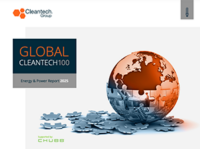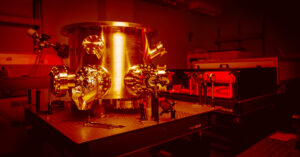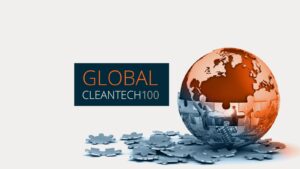Regulatory and Supply Chain Enablers for the Fusion Industry
The Fusion Industry Association (FIA) hosted their second annual conference in late March and convened leaders from across the fusion ecosystem to highlight the drivers and challenges for fusion commercialization.
Two key themes centered around:
- The importance of building and encouraging supply chains that will enable the growth and development of fusion technologies at scale.
- The policies surrounding how fusion would be regulated and that it is critical that fusion not be regulated under the same Part 50 code alongside fissio
Nuclear Fusion Regulations and Part 30 Announcement
Representatives from the U.S. White House and the Congressional Fusion Energy Caucus chairs remarked on the importance of nuclear fusion and its role as one of the five priorities through the Net Zero Game Changers Initiative.
Nuclear Regulatory Commission (NRC) Commissioner Annie Caputo led conversations on the role the NRC would take to establish initial pathways for fusion regulations. Following these talks, it was announced on April 14 that fusion technologies would be officially regulated in a manner different from fission, under Part 30 of the Code of Federal Regulation, as a result of the decreased risks that fusion presents.
According to an article published by CNBC, “Part 30 is far simpler, less costly, and more efficient than the more complicated rules imposed on fission reactors under Part 50.” This is important because certain policies that would require fission reactors to secure funding “to cover claims from nuclear meltdowns, won’t apply to fusion plants.”
Ryan Umstattd, VP of Product and Partnerships from Zap Energy, felt that when it comes to barriers to growth for the fusion industry, it cannot be understated how important the differentiation is between fission and fusion. It is critical that fusion is not regulated in the same ways that fission and advanced nuclear reactors are. However, just because fusion and fission have been differentiated on a policy level does not mean that the average citizen is aware of the differences and the decreased risks that fusion presents. As a result, it is critical that the fusion industry and policy leaders also educate the public on the technology and systems, to potentially avoid issues of future NIMBY (not in my backyard)-ism.
Chicken or Egg: Building Out Fusion Supply Chains While Proving the Science
In discussions centered around supply chain development including supply chain drivers and challenges, it was mentioned that if Commonwealth Fusion Systems were to get 10,000 operating fusion plants connected to the grid by 2050, then the supply chains to meet the system specifications for the plant requirements and components would need to be developed shortly.
However, many key players across industrial and commercial sectors may be hesitant to develop and invest in manufacturing components and supplies for an industry that has yet to prove net energy gain in the private sector. Some analogies that have been used to describe fusion component and supply chain development include calling it a ‘chicken-or-egg’ type situation or building a plane while flying it — both essentially to describe a key challenge which is that component and supply chain partners will have to invest and take a bet on the success of an industry that has yet to be commercialized.
While many private fusion companies have been achieving milestone after milestone and have received unprecedented amounts of funding, it is still understandable that some companies and industry groups are still looking for further indicators of future success and may be hesitant to build out entire manufacturing lines and tools without the necessary offtake agreements in place.
In discussions with some players, it was indicated that a few of the many interesting areas for supply chain and component growth include:
- Enriched Lithium-6 (Li-6) sourcing
- Deuterium sourcing (deuterium manufacturing is not currently undertaken in the U.S.)
- HTS magnet supplies (Russia and China are key providers but there is a growing landscape across Asia and the U.S.)
- Power electronics, control systems, semiconductors, and capacitors
Lithium-6 Sourcing and Separation Technologies
Although there are many other immediate and pressing supply chain concerns for the fusion industry, one challenge that may present itself in the future is the need to secure enriched Lithium-6 (Li-6).
Research suggests that for effective tritium breeding, the element lithium and its less naturally occurring isotope, Li-6, will be required. While it is not anticipated that the demand from the fusion industry on lithium supplies will be on a scale that will be competitive with those of other industries (for example, the growing electric vehicle sector), securing enriched Li-6 may pose a challenge.
Separation techniques for Li-6 include mercury-based separation, which has been banned in the U.S. and by other signatories of the Minamata Convention, and potentially a chemical separation technique using crown ethers.
Research is being done to determine the percentage and level of enriched Li-6 that will be required to develop breeding blankets with optimal tritium breeding ratios (TBRs) that meet the needs of various fusion reactor designs. However, regardless of the volume and percentage required, the key challenge will be centered around identifying and developing secure and sustainable ways to obtain enriched Li-6.
Richard Pearson, Chief Innovator at Kyoto Fusioneering states, “The technology for enriched Li-6 production, initially developed in the 1950s for non-fusion applications, has encountered scalability limitations. Subsequently, new lab-scale methods have been explored. Although upscaling poses challenges, the emergence of fusion energy has sparked heightened motivation for accelerated progress.”
Kyoto Fusioneering, specialists in nuclear fusion planet engineering and developers of tritium breeding blankets, recently raised a $79M Series C round.
Looking Ahead
- Key players in the lithium extraction and refinement industry will need to keep a close eye on the growing and evolving fusion landscape to determine when investing in Li-6 separation techniques will be appropriate to meet demands.
- The FIA announced they will shortly release a detailed report on supply chain development for the fusion industry.
- Gauss Fusion, a greentech venture founded in 2022, raised €8 million in initial capital in their pre-seed round and is founded by, and has strategic partnerships with, key industrial leaders including Alcen (France), ASG Superconductors (Italy), Bruker EAS (Germany), IDOM (Spain), and RI Research Instruments (Germany). This type of business model will allow for Gauss to have their fusion process be informed by the leaders in the space and directly engage with the specialized component manufacturers in Europe.
If a private fusion company were to achieve energy gain in the next year or so, it would be an incredible signal of potential to other industries and to the suppliers to the fusion industry and the offtake market. While many companies like Commonwealth Fusion, TAE Technologies, Helion and other magnetic and inertial confinement technologies have been making airwaves, other technologies like those utilizing Z-pinch also have shown promising advancements in the past few years and months. Stay tuned for more information on the Z pinch technologies used by Zap Energy and MIFTI and the rapid progress they have been making.



